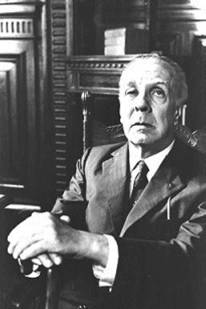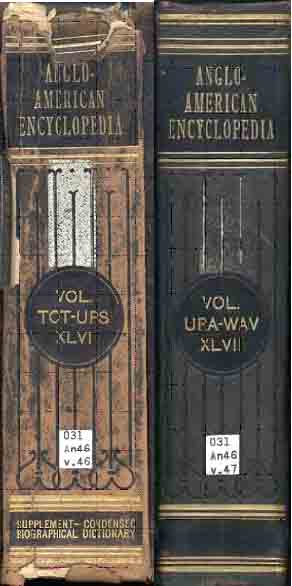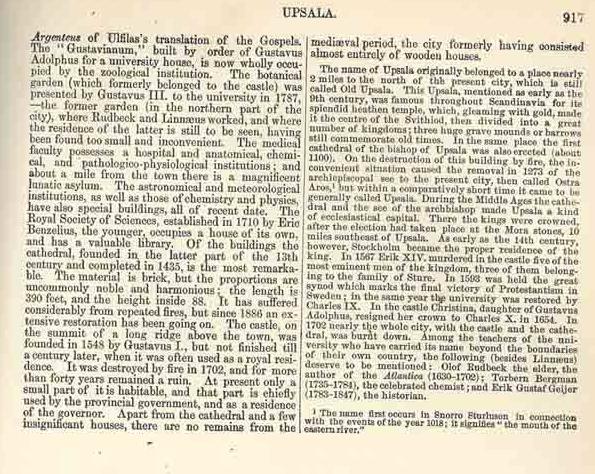Calculating the Limits of Poetic License:
Fictional Narrative and the History of Mathematics
Leo Corry - Tel Aviv University
| index | 1 | 3 | 4 |
3. Suspension of Disbelief:
"Suspension of disbelief" is the fundamental attitude on which the very possibility of the poetic or fictional act is based. Without the basic willingness on the side of the reader to accept a-priory the rules of the game and the limitations set by the author, no act of poetic interchange can ever start to take place. The reader must be willing to follow any kind of logic adopted by the author, to give up demands for strict and coherent realism, and to follow the author to wherever he takes the plot and the characters. This holds equally true, of course, of poetry, fictional narrative, theater and TV-series. However, this generous attitude on the side of the audience is only conditionally granted to the author as a starting point, and should by no means be taken for granted. It is the author's duty to continue developing the plot in such a way as to keep alive the basic willingness of the reader to suspend disbelief.
The term "suspension of disbelief" and the idea that it provides the basis for poetic faith was explicitly formulated by the English romantic poet Samuel Taylor Coleridge in 1817.
He said:[*]
In this idea originated the plan of the "Lyrical Ballads"; in which it was agreed, that my endeavours should be directed to persons and characters supernatural, or at least romantic, yet so as to transfer from our inward nature a human interest and a semblance of truth sufficient to procure for these shadows of imagination that willing suspension of disbelief for the moment, which constitutes poetic faith.
Incidentally, science played a most significant role in shaping the intellectual horizon of Coleridge, and this poet embodies a very interesting example of the interaction between between romanticism and early nineteenth-century science.[*] Most remarkably, in a poem of 1791 entitled "A Mathematical Problem", Coleridge addressed a question which is directly relevant to the relationship between "mathematics and narrative", or in this case, "mathematics and poetry". The introduction to the poem is a letter to his brother, the reverend George Coleridge, which I quote here (verbatim):
I have often been surprized, that Mathematics, the quintessence of Truth, should have found admirers so few and so languid.--Frequent consideration and minute scrutiny have at length unravelled the cause--viz.--that though Reason is feasted, Imagination is starved; whilst Reason is luxuriating in it's proper Paradise, Imagination is wearily travelling on a dreary desart. To assist Reason by the stimulus of Imagination is the design of the following production. In the execution of it much may be objectionable. The verse (particularly in the introduction of the Ode) may be accused of unwarrantable liberties; but they are liberties equally homogeneal with the exactness of Mathematical disquisition, and the boldness of Pindaric daring. I have three strong champions to defend me against the attacks of Criticism: the Novelty, the Difficulty, and the Utility of the Work. I may justly plume myself, that I first have drawn the Nymph Mathesis from the visionary caves of Abstracted Idea, and caused her to unite with Harmony. The first-born of this Union I now present to you: with interested motives indeed--as I expect to receive in return the more valuable offspring of your Muse.
Coleridge thought that with the help of the muses and with the assistance of imagination, mathematics could be rescued from isolation and languidness. It is not necessary to strictly agree with him in order to realize that the triangular relationship that we are analyzing here is illuminated with the help of his concept. Let us look again at the diagram describing possible attitudes to texts on the side of the reader, which is the only one where mathematics in fiction appears in contraposition to the other two:
| Mathematics, History of Mathematics | Mathematics in Fiction | |
| Expected reader's attitude | Critical | Suspension of Disbelief |
There is a fundamental difference in the way we approach a scientific or a historical text, on the one hand, and a fictional or poetic text, on the other hand. The basic contract between the author and the reader in the former case is: ‘Don't believe a word of what I say. Check by yourself and be as skeptical as you can. That is the test that I must undergo.’ In a scientific text, a technical or factual mistake is simply unacceptable. Factual mistakes are also unacceptable in historical texts and, at the same time, any interpretation followed by a historian is at least amenable to criticism. Such attitudes when reading a fictional text or a poem are simply beyond the point. Here the basic contract is very different, and it says: ‘Give me the benefit of temporary suspension of disbelief. I will take you safely throughout the text and you are going to enjoy it. Deviations from the historical record or from scientific facts can not only be perfectly acceptable in a piece of fictional narrative; sometimes, indeed, they are the driving force. Such deviations may have different effects in a piece of fiction if they are caused by plain mistake or on purpose on the side of the author. But in any case deviations are acceptable in a way that they are not in scientific or historical texts.[*] I will return to this point below.
It can be argued, of course, that one can read a scientific text for the sake aesthetic pleasure and that, moreover, it is very likely that on first reading of a mathematical text we will be willing to suspend disbelief and bear with the author's arguments all the way down until the end of the paper, to see where it is leading and how this is done. This is undeniable, but this is just an option. The critical reading is mandatory: we have not done the proper reading of a scientific or historical text until we have not read it with a critical eye.
The opposite is the case with the fictional text. We can read it critically (although we will hardly do this as a first reading): we may bring to our reading the tools of the literary critic, or of the semiotic researcher, or of the historians, but again, these are options. The literary or the poetic experience associated with the reading of a fictional text is the one associated with suspension of disbelief.
With this perspective in mind, I would like to analyze one important example that sheds additional light on the points discussed so far. My example is in the fictional prose of Jorge Luis Borges. Borges was very fond of quoting Coleridge, and his own entire literary output is based on a masterful implementation of the principle of suspension of disbelief. Borges’ short stories take the idea behind the principle to unprecedented extremes. Their success is based on the willingness of the readers to bear with him in spite of the overtly counterfactual, paradoxical, unrealistic, and even illogical, texts.

Basic to most stories is some form of embedding fiction in reality. The characters and plots are so very far away from daily reality that the reader does not even start casting doubt on them or on their deeds. "Suspension of disbelief" is forced upon the reader from the first line of any story. As the story develops, Borges adds sophisticate storytelling mechanisms that prevent the reader from abandoning this initial attitude, as the reading proceeds.
Much of Borges' raw material comes from philosophical and scientific ideas that he elaborates into, or combines within, his stories. It is in this sense that a brief discussion of his texts and his storytelling techniques is of relevance here.
A useful example to consider is the famous short story "Tlön, Uqbar, Orbis Tertius." The story tells about a mysterious country called Uqbar, and about Tlön, an imagined world whose description is the main subject of the texts of Uqbar's writers. Tlön represents an embodiment of Berkeley's idealistic philosophy, and the story develops and examines the functioning of such a world, thus providing an "epistemological metaphor" (to use a term coined by Umberto Eco in this context) of that philosophy.
The narrator first becomes aware of the existence of Tlön through an encyclopedia, as described in the famous opening passage of the story:
I owe the discovery of Uqbar to the conjunction of a mirror and an encyclopedia. The mirror troubled the far end of a hallway in a large country house on Calle Gaona, in Ramos Mejía; the encyclopedia is misleadingly titled The Anglo-American Cyclopedia (New York, 1917), and is a literal (though also laggardly) reprint of the 1902 Encyclopedia Britannica. ... [My friend] Bioy Casares remembered a saying by one of the heresiarchs of Uqbar: Mirrors and copulation are abominable, for they multiply the number of men. I asked him where he'd come across that memorable epigram, and he told me it was recorded in The Anglo-American Cyclopaedia, in its article on Uqbar.
Inventing books and then creating a story around them is a typical Borges trick intended to support the initial willingness of the reader to suspend disbelief. If it is written in a book, why should one disbelieve what the story says? On the other hand, seasoned Borges readers and critics will typically be quick to assume that books mentioned in the stories are very likely invented. And so, it was typical for commentators to assume that the Anglo-American Cyclopedia is another of Borges' inventions. A recent, very diligent search, by Alan White, has shown that this is not the case.
 In
fact, the
Anglo-American Cyclopedia
does exist and it is an exact reprint of the ninth edition
of the Britannica (well,
the 1902 edition is actually the tenth). Also the details about the specific volumes
mentioned by Borges in the story deserve closer inspection. Indeed, in the story
Borges looks, in vain,
for the entry "Uqbar" in a copy of the
Anglo-American Cyclopedia that
happens to exist in the house where the opening conversation takes place.
"On the last pages of Volume XLVI--he says-- we found an article on Upsala; on
the first pages of Volume XLVII, one on Ural-Altaic Languages, but not a word
about Uqbar." Some days later Borges has the opportunity to see Bioy's copy of
the
Cyclopedia where he had originally
read the article on Uqbar and this copy was somewhat different from Borges' own.
In
fact, the
Anglo-American Cyclopedia
does exist and it is an exact reprint of the ninth edition
of the Britannica (well,
the 1902 edition is actually the tenth). Also the details about the specific volumes
mentioned by Borges in the story deserve closer inspection. Indeed, in the story
Borges looks, in vain,
for the entry "Uqbar" in a copy of the
Anglo-American Cyclopedia that
happens to exist in the house where the opening conversation takes place.
"On the last pages of Volume XLVI--he says-- we found an article on Upsala; on
the first pages of Volume XLVII, one on Ural-Altaic Languages, but not a word
about Uqbar." Some days later Borges has the opportunity to see Bioy's copy of
the
Cyclopedia where he had originally
read the article on Uqbar and this copy was somewhat different from Borges' own.
The tome Bioy brought was, in fact, Volume XLVI of the Anglo-American Cyclopaedia. On the half-title page and the spine, the alphabetical marking (Tor-Ups) was that of our copy, but, instead of 917, it contained 921 pages. These four additional pages made up the article on Uqbar, which (as the reader will have noticed) was not indicated by the alphabetical marking. We later determined that there was no other difference between the volumes.
Now, if we look at the real Anglo-American Encyclopedia we find the following, very remarkable facts:


The last entry of Vol. XLVI is indeed Upsala and it ends up on p. 917, whereas the first entry of Vol. is indeed Ural-Altaic Languages! So, Borges is inserting his unreal country in very close gaps that reality provides him with. The basic contract between him as author and any prospective reader of the story is that the latter will suspend disbelief while reading. However, Borges anticipates the case that his reader may deviate from this basic contract and will start to read critically, i.e., will try and find out whether the story is "true" or not. In this case, the reader will have a though time, since he cannot be sure, to begin with, whether or not the Encyclopedia really exists and, if he happens to find a copy of it, once he arrives on p. 917 of Vol. XLVI, he will have to decide if the article on Uqbar could not actually come there, right after Upsala.
Understanding the details of Borges' storytelling mechanism, then, helps getting a clearer conception of the implications of the idea of "suspending disbelief", especially in contrast with the idea of a critical reading of a text. It is thus remarkable that, very often, commentators of Borges' work have failed to make this separation and have continued to suspend disbelief where they were supposed to be reading critically. In this way, Borges has been credited, for instance, with a deep understanding of physical and mathematical theories and, occasionally, even with the ability to anticipate such theories in his stories. Thus for instance, in the following assertion:
Borges discovered the essence of bifurcation theory thirty years before scientists formalized it in mathematical terms.[*]
Good reader that he was, however, Borges never confused these two opposed, basic attitudes towards a text: the critical and the benevolent one (where disbelief is suspended). One place where this dichotomy is nicely reflected appears in one of his more recondite text. To the collection Discusión, three short book reviews were added among which one finds, perhaps surprisingly, notice of a book that is well known to mathematicians but much less so to general readers: Mathematics and the Imagination, by Edward Kasner and James Newman. This is what Borges says about the book:
Its four hundred pages record with clarity the immediate and accessible enchants of mathematics, those that even a mere man of letters can understand, or make believe that he has understood.
'Make believe' ("imaginar" is the word in Spanish) that one understands: that's what science in fiction is, above all, for Borges. And the reader may willfully play his part of the game and suspend disbelief, provided that the quality of the fiction is good enough to warrant the effort.
I think that keeping these concepts in mind may help us clarify some basic questions about poetic license in fictional narratives that deal with mathematical topics. In the next section I proceed to do so while analyzing some specific examples.
| index | 1 | 3 | 4 |
